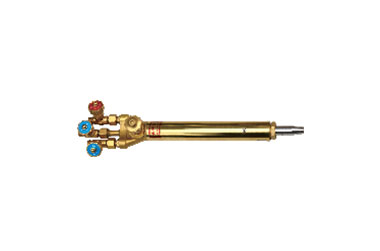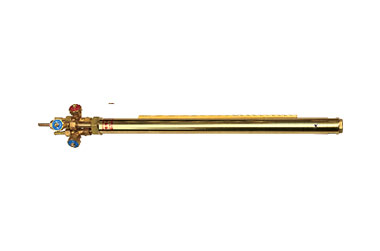Generally speaking, steel with a thickness of more than 300 mm is called
large thickness cutting. According to the principle of gas cutting,
large thickness steel can be cut through as long as the oxygen supply is
sufficient and can reach the bottom of the cut.
Major difficulties
1.
The upper and lower parts of steel are not uniformly heated, the upper
part is hot and the lower part is cold, and the operation is improper.
When cutting, it often fails to cut along the thickness direction
smoothly, resulting in cutting failure.
2. Because of the
thickness of steel, it takes considerable time for combustion reaction
to propagate along the thickness direction. At the same time, the lower
the purity of cutting oxygen flow to the lower part of the incision, the
lower the kinetic energy, and the larger the drag, the better the
cutting speed must be controlled.
3. With more slag, the
ability of slag discharging by cutting oxygen flow is weakened, which
can easily lead to slag blockage at the bottom of the incision and
destroy the normal gas cutting process.
The most important condition for large thickness cutting is to supply enough oxygen flow to the cutting area.
In order to ensure adequate oxygen supply, attention must be paid to:
1.
The size of the whole oxygen supply system, including pressure reducer,
aerosol pipe, various joints and valves, cutting torch intake pipe and
cutting nozzle aperture, should meet the corresponding oxygen supply
capacity to avoid throttling phenomenon.
2. According to
the thickness of steel and cutting length, sufficient air supply should
be prepared to avoid cutting interruption due to exhaustion of oxygen.
Generally, it is extremely difficult to re-cut large thickness steel.
Another
important factor is cutting oxygen pressure, which should be low rather
than high. When using common cutting nozzle, the oxygen pressure at the
entrance of cutting torch should be between 152 kPa and 386 kpa.
0.49-0.69 Mpa cutting nozzle should be used when using diffusion cutting
nozzle. If the cutting oxygen pressure is too high, the temperature of
oxygen flow will decrease. On the contrary, it will play a cooling role
in the gas cutting area. In some cases, it may even break the gas
cutting process.
Welcome to Wuxi Suba!








